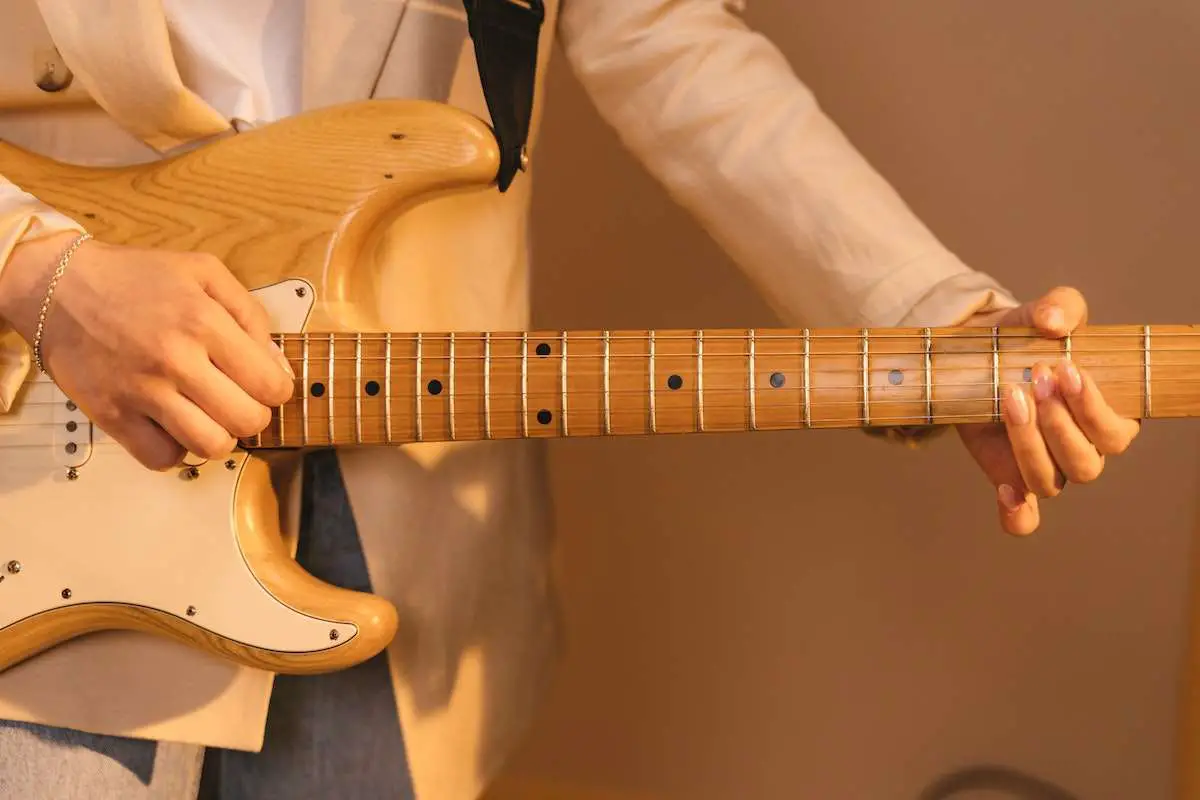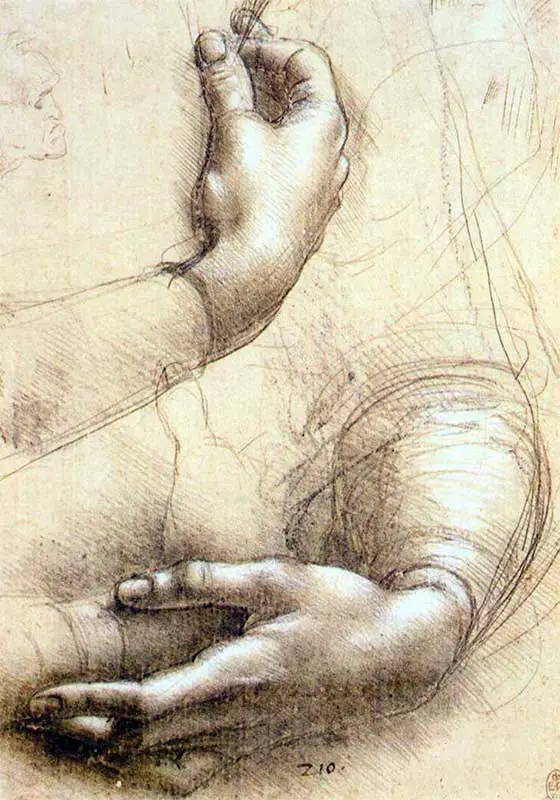Playing the guitar is a captivating and rewarding endeavor that requires a delicate balance of technical skill, musicality, and passion. While the guitar itself is a remarkable instrument, yet it’s the guitarist fingers that bring it to life.
The dexterity and coordination of a guitarist’s fingers are essential in creating beautiful melodies, harmonies, and intricate chord progressions.
In this article, we will dive into the study of hands – exploring their anatomy, understanding their role in playing the guitar effectively, and delving into techniques for improving finger strength and dexterity.

Definition of Guitarist Fingers
Guitarist fingers refer to the digits on a person’s hand that are used to fret or pluck the strings on a guitar. Specifically, we focus on the thumb, index finger (also known as the first finger), middle finger (second finger), ring finger (third finger), and little finger (fourth finger). These five fingers are instrumental in executing various techniques such as playing guitar chords, basic scales, arpeggios, slides, hammer-ons, pull-offs, vibrato – essentially everything needed to create captivating music on this versatile instrument.
Importance of Fingers in Guitar Playing
The significance of guitarist fingers cannot be overstated; they serve as conduits through which musical ideas travel from our minds to our instruments. Each movement of these digits can produce different tones, articulations or execute unique playing techniques. The precision with which our fingers interact with the strings influences overall sound quality and expression.
As such, developing strength and agility in these crucial appendages allows aspiring guitarists to unlock their full potential by attaining greater control over dynamics, rhythmical intricacies, phrasing nuances – ultimately enabling them to convey emotions through their music more effectively.

“Study of Hands” – Leonardo da Vinci
Anatomy of the Fingers
Structure and Composition of the Fingers
The fingers, a remarkable part of our hands, are composed of various components that enable their intricate movements on the guitar.
Each finger consists of three phalanges: proximal, middle, and distal.
These phalanges are connected by joints known as interphalangeal joints. The thumb, however, differs slightly in structure and possesses only two phalanges.
The fingers are comprised of bones called metacarpals which connect to the carpals in our wrists. These skeletal structures provide a solid foundation for finger movement and dexterity.
Related: The anatomy of the electric guitar
Role of Tendons, Ligaments, and Muscles in Finger Movement
Tendons play a crucial role in transmitting force from muscles to bones during finger movement. They connect muscle tissue to bone structure and facilitate controlled extension or flexion of the fingers. Ligaments provide stability by connecting bones together at various joints within the hand.
Their presence ensures that the finger joints remain aligned during guitar playing activities. Additionally, muscles contribute significantly to finger movement by contracting or relaxing to facilitate precise control over each digit’s position on the guitar fretboard.
Different combinations of muscle contractions allow for intricate movements such as bending a note or executing complex chords smoothly. Overall, understanding the anatomy of our fingers provides valuable insights into how we can enhance their functionality while playing the guitar.
By comprehending their composition and appreciating the role played by tendons, ligaments, and muscles in finger movement, we can develop strategies to improve precision and dexterity on this versatile instrument.
Finger Placement on the Guitar Neck
Overview of finger numbering system (1-4)
When it comes to playing the guitar, understanding the finger numbering system is crucial for proper technique and efficient finger placement. Each finger is assigned a number, starting from the index finger as 1, followed by the middle finger as 2, ring finger as 3, and finally the pinky finger as 4.
This numbering system allows for clear communication and instruction when discussing specific fingering patterns or exercises. By recognizing each finger’s number designation, guitarists can better navigate their way around the fretboard with precision and accuracy.
Explanation of proper finger positioning for chords and scales
Proper finger positioning is fundamental in achieving clean and accurate chords and scales on the guitar neck. When playing chords, it is important to use the fingertips rather than relying on flat fingers to avoid any unintentional muting of adjacent strings.
By using only the tips of your fingers to press down on individual strings within a chord shape, you can ensure that each note rings out clearly without interference from other strings. In terms of scales, a similar principle applies.
Each fret should be approached with intentionality so that you can produce clear notes without accidentally touching other strings or producing unwanted buzzing sounds. The thumb should remain positioned behind the guitar neck for stability while allowing fingers to reach over onto different frets comfortably.
Moreover, understanding how to correctly pivot your hand up and down along the neck while maintaining proper wrist alignment enables seamless transitions between different scales or positions.
By keeping your fingers close to but not pressing down on their respective strings during transitions, you can quickly navigate across various notes while maintaining clarity in sound production.
Meticulous attention to detail regarding both chordal and scalar fingering positions will facilitate smoother execution of musical passages on the guitar neck. Developing muscle memory through consistent practice will enable guitarists to effortlessly navigate through a wide range of chords and scales, ultimately enhancing their overall playing proficiency.
Finger Strength and Dexterity Exercises
Importance of Developing Finger Strength and Dexterity
Having strong and dexterous fingers is paramount for any guitarist aiming to reach their full potential. Not only do strong fingers allow for better control over the strings, but they also enhance speed, accuracy, and overall playing technique. By developing finger strength and dexterity, a guitarist can execute complex chord progressions, intricate solos, and fluid melodic lines effortlessly.
Moreover, it minimizes the risk of strain or injury while playing for extended periods. Engaging in regular finger exercises will not only improve your performance but also unlock new possibilities on the fretboard.
Description of Various Exercises to Improve Finger Strength
There are several exercises that can help strengthen your fingers for guitar playing. One effective exercise is finger push-ups using a tabletop or guitar strings as resistance.
To perform this exercise, place your fingertips on a flat surface or the strings of your guitar (avoiding excessive pressure) and push down firmly as if you were doing push-ups with your fingers alone. This exercise engages the muscles in your fingers and wrists, gradually increasing their strength.
Another beneficial exercise is finger stretching using rubber bands or hand grips. Start by wrapping a rubber band around all four fingers of one hand, then spread your fingers apart against the resistance of the band.
Repeat this motion several times before switching hands. Alternatively, you can use hand grips specifically designed to strengthen hand muscles by squeezing them repeatedly.
Additionally, practicing finger independence drills will enhance dexterity by improving coordination between each individual finger. A simple exercise involves placing each finger on subsequent frets of a single string (e.g., index finger on 1st fret, middle finger on 2nd fret) and lifting one finger at a time while keeping the others pressed down—repeat this sequence across different strings and positions on the neck.
This exercise challenges your fingers to work independently, resulting in improved control and precision during complex chord changes or intricate solos. By incorporating these exercises into your regular practice routine, you will gradually witness an increase in finger strength, dexterity, and overall control over the guitar fretboard.
Remember to start slowly and gradually increase the intensity or duration of each exercise as your fingers become more accustomed to the training. With consistent effort and patience, you will reap the rewards of stronger, more agile guitarist fingers.
Common Techniques Utilizing Guitarist Fingers
Among the array of guitar techniques, mastering finger control is key to achieving fluidity and expression in playing. Three common techniques that heavily rely on the dexterity of guitarist fingers are hammer-ons and pull-offs, slides, and vibrato.
Hammer-ons and pull-offs allow for seamless transitions between notes without having to pluck each string individually. By applying pressure with a fretting finger onto a note while simultaneously “hammering” another finger onto a higher note, or by “pulling off” from a higher note to a lower one, guitarists can create smooth legato passages.
Slides add an element of fluidity to melodies or solos; they involve gliding the fingertip along the string from one fret to another without releasing pressure. Vibrato is used to infuse sustained notes with expression by oscillating the pitch slightly back and forth using subtle finger movements.
Nail Care for Guitarists
Maintaining optimal nail care is imperative for guitarists aiming for top-notch sound production and precision in their playing. Proper nail length and shape are essential factors in achieving desired tone quality. Ideally, nails should be kept at a length that allows them to easily strike the strings without interfering with fingertip contact on the fretboard.
For most players, keeping nails short is preferred as it ensures direct contact between fingertips and strings for better control. Additionally, avoiding activities that can damage nails such as biting or using them as tools will help maintain their integrity.
1: Proper nail length and shape
Nails should be trimmed regularly to prevent excessive length that may hinder proper finger placement on the strings. To ensure ease of playing, it is recommended to shape nails into a slight curve that mimics the contour of your fingertips.
2: Avoiding damaging activities that can harm nails
Guitarists should refrain from harmful habits that can compromise nail health. These include using nails to open packages, biting or picking at them, or exposing them to harsh chemicals without protection. By adopting good nail care practices and maintaining their strength and shape, guitarists can enhance their playing experience.
The Role of Calluses in Guitar Playing
Through regular practice, guitarists develop calluses on their fingertips as a result of the repetitive pressure exerted on the strings. These hardened areas of skin play a vital role in facilitating comfortable fretting and enhanced sustain.
Calluses act as a protective shield against discomfort caused by pressing down on the strings and distribute the pressure evenly across the fingertips. As a result, guitarists can fret notes with increased accuracy and sustain them for longer durations without experiencing pain or fatigue.
1: Improved comfort while fretting strings
Calluses enable guitarists to fret notes with ease and reduced discomfort. The added cushioning provided by calloused fingertips allows for better control over string pressure, leading to improved accuracy in playing chords, guitar scales, and intricate melodies.
2: Enhanced ability to sustain notes
The presence of calluses allows for better grip on the strings when sustaining notes. This grants guitarists greater control over the duration of sustained tones without sacrificing precision or risking premature note decay. With calluses in place, players can confidently hold out notes for longer periods while maintaining consistent tone quality.
Famous Guitarists
Throughout history, numerous legendary guitarists have showcased extraordinary skill and mastery over their instrument’s fingerboard. From Jimi Hendrix’s electrifying solos to Eric Clapton’s soulful melodies, these icons have captivated audiences worldwide with their remarkable talent and inspired countless aspiring musicians along the way.
Their contributions have not only shaped music history but have also served as a testament to the endless possibilities that skilled guitarist fingers can unlock. Aspiring guitarists can look to these iconic figures for inspiration and guidance as they embark on their own musical journey.
Conclusion
The fingertips of guitarists hold immense potential, capable of producing captivating melodies, complex chords, and breathtaking solos. By nurturing proper nail care habits, maintaining calluses, and mastering techniques such as hammer-ons, pull-offs, slides, and vibrato, guitarists can unlock a world of expressive possibilities.
Embracing the importance of finger control and following these tips will empower aspiring musicians to reach new heights in their playing. So let your fingers dance across the strings with precision and passion, for within them lies the power to create mesmerizing music.
Related: Learning Guitar As An Adult
